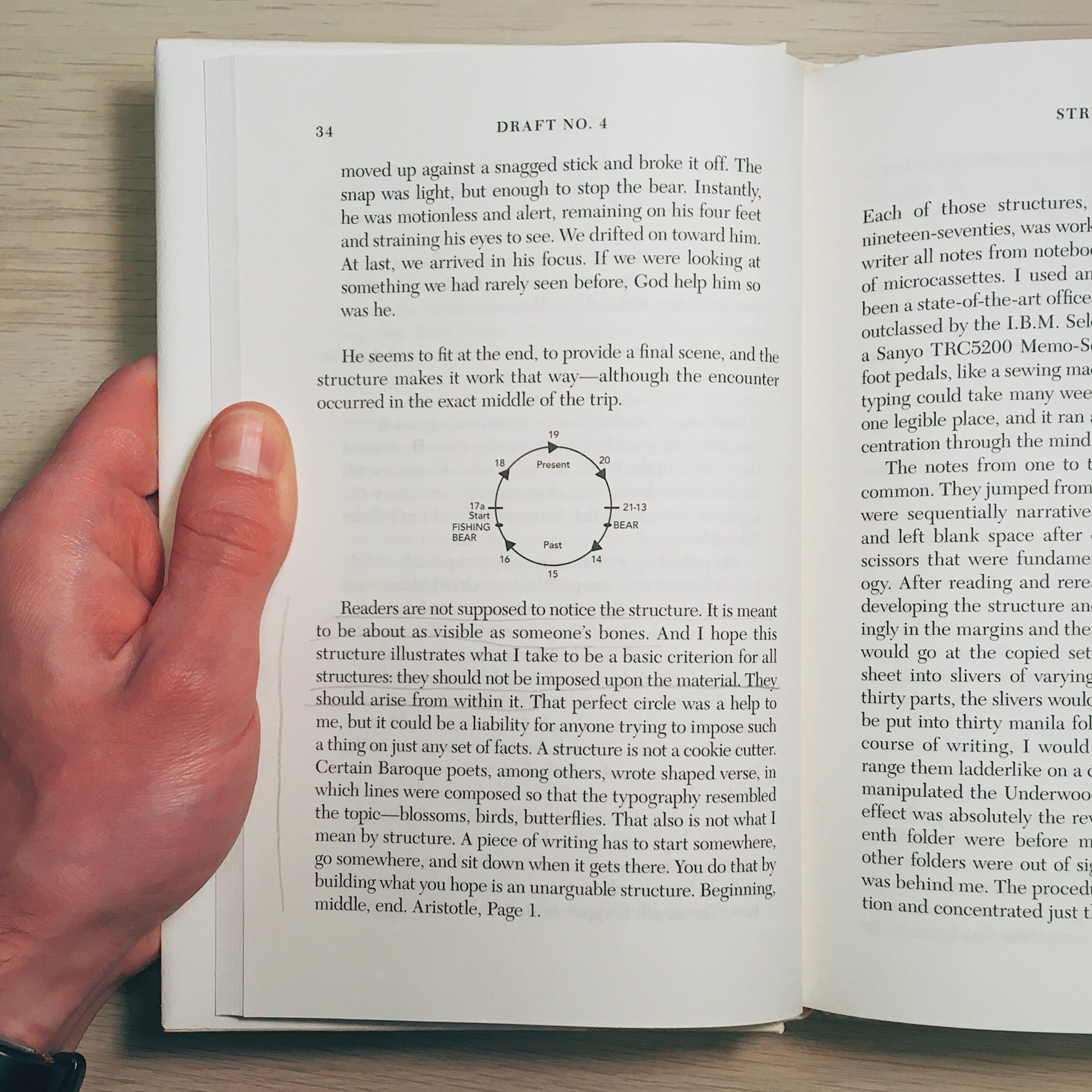Draft No. 4 by John McPhee
The Book in Three Sentences
Creative nonfiction is not making something up, but making the most of what you have. When moving from your first draft to your fourth, expect a 4:1 ratio of writing time (i.e. if the first draft takes 2 years, then the combined second, third, and fourth drafts will take 6 months). Nobody writes like you, therefore a good editor’s goal is to help writers make the most of the patterns that are unique about them.
Structuring your Writing
The structure of your writing should arise from the material itself and not be imposed on the material. Readers aren’t supposed to notice the structure of your writing. “It should be about as visible as someone’s bones.” (p34)
Always write the beginning to your story — a lead — before attempting to sort a large amount of raw material into a structure. A lead is a promise of what a piece of writing is going to be. Don’t use the lead if this isn’t the case. (pp.49–50)
To determine the structure of your writing:
review your notes;
write a lead (a beginning to your story);
think about where you’re going, and how you’re going to get there. (p.49)
Always know where you’re going to end before you have begun to write. McPhee even uses multiple endings in his writing which he equates to his preoccupation with the underlying structure. (p.60)
Develop your Style
Nobody writes like you — or like anyone else — and therefore there is little competition between writers. A good editor’s goal is to help writers make the most of the patterns that are unique about them. In a sense, writing is a matter of developing oneself. (p.82)
Developing your writing style begins with “reacting to excellence as it is discovered.” In the process of drawing from the fabric of admired things, what begins as imitation quickly fades into a style of one’s own. (p.161)
Selection and Editing Process
McPhee has a 4:1 ratio of writing time when moving from the first draft to the fourth. If the first draft takes 2 years: the second, third, and fourth drafts will take a combined 6 months. (pp.158–159)
Writing is selection. Just to start a piece of writing you have to choose one word and only one from more than a million in the language. (p.180)
You only have one crude way of selecting things: if something interests you, if goes in — if it doesn’t, it stays out. Write on subjects in which you have enough interest on your own to see you all the way through. (p.180)
Factual writing is a treasure hunt, and when the nugget comes along you know what they are.They often provide beginnings and endings, even titles. McPhee uses the example: in interior Alaska, non-native people often describe one another in terms of when they “came into the country” — which eventually became the title of one of his books. (p.183)
Creative nonfiction is not making something up but making the most of what you have. (p.185)
When you decide what to leave out, begin with the author. The creative reader silently articulates the unwritten thought that is present in the white space. Let the reader have the experience. Leave judgement in the eye of the beholder. (p.185)
Writing Hacks
Can you answer one question?
Anne Fadiman — author and writing teacher at Yale — emailed various writers she knew asking if they would answer just a single question that was asked by one of her students. It’s so easy, how could they refuse? John McPhee, among others, are still answering questions to this day. (p.181)
Cut Something Out
Most magazines and newspapers have a makeup department where articles are submitted to be reviewed for word count. If your piece came back with the note, Green 5, it meant remove 5 lines of text. The exercise was a literal one: you underline the words to be removed with a green pen in case they could be added back (if it came to that).
The idea is to remove words in such a manner that no one would notice that anything has been removed. It should not upset the author’s tone, manner, nature, or style. This is a great exercise for anyone editing their work, and McPhee makes his students do this as an exercise. (p.186)


